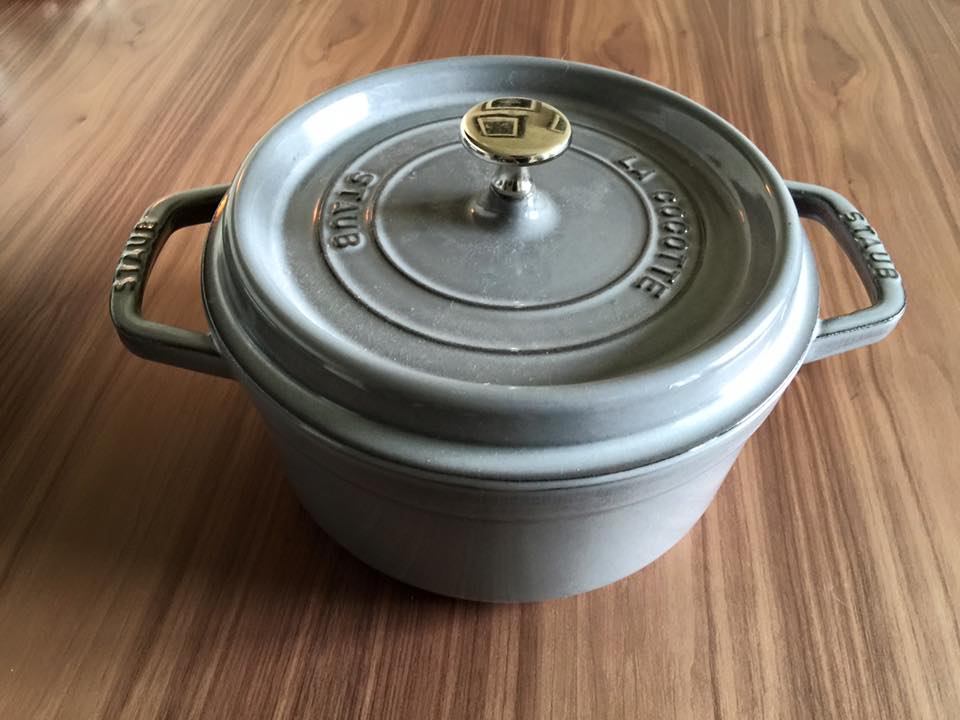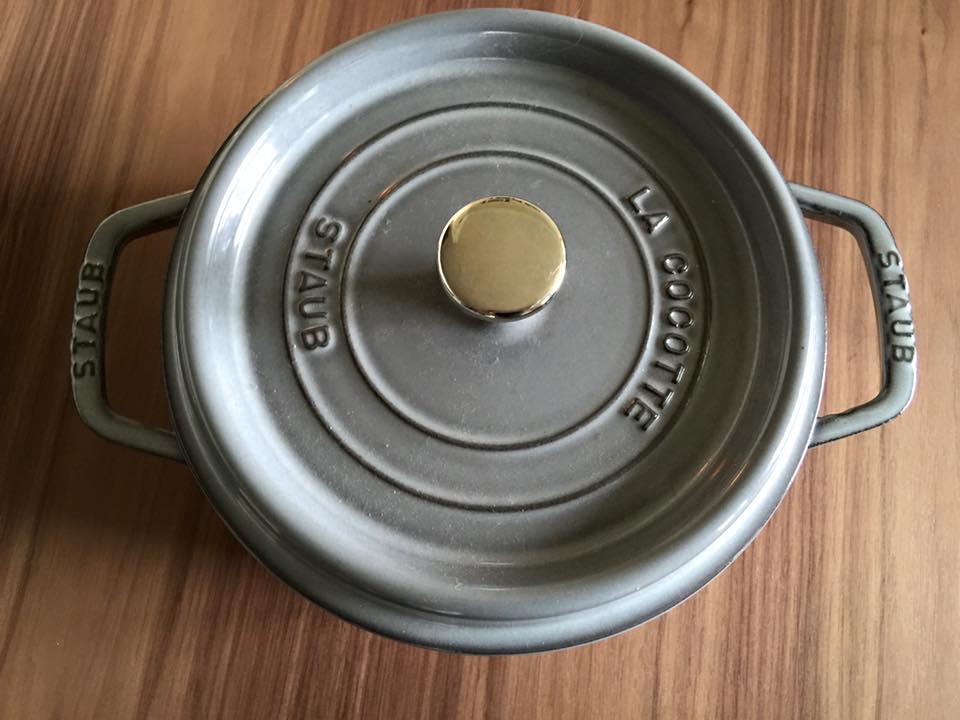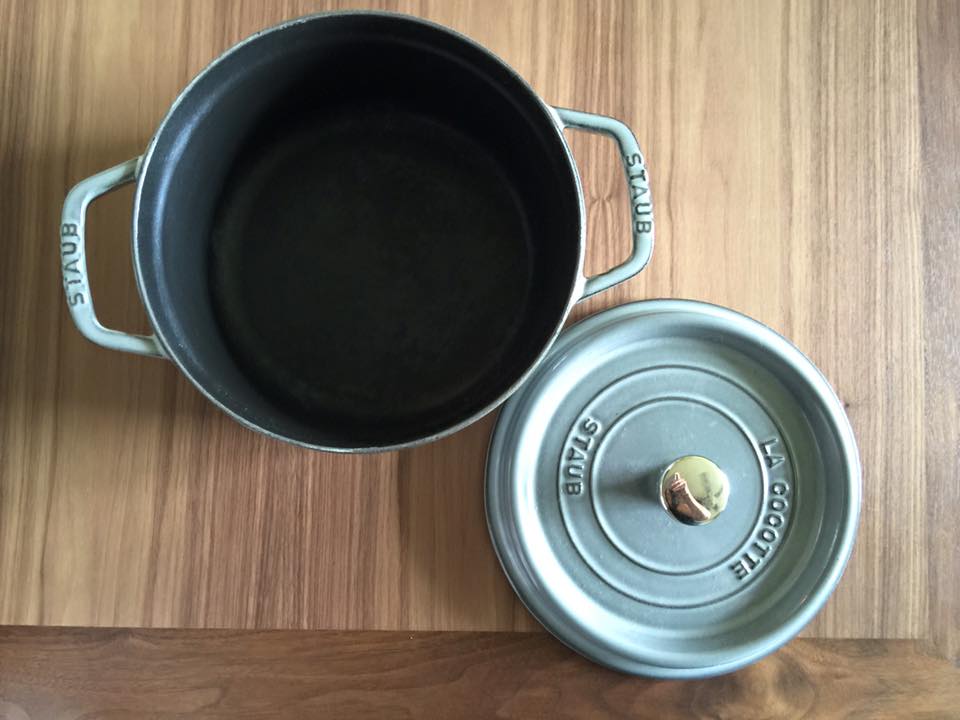#LeadFree: Gray Staub Coated Cast Iron La Cocotte Casserole
#LeadFree | Cast Iron | Chromium | La Cocotte | Staub | Staub Cast Iron | XRF Testing | XRFTesting
This is a coated cast iron casserole by Staub that was tested in 2016. It tested negative for lead, arsenic, cadmium and mercury when tested with an XRF instrument. The interior and exterior surfaces were tested. The exterior was positive for chromium (Cr) at 26,200 ppm. For context chromium is part of many stainless steel items.
Here’s a link to this product on Amazon,
please note I have not tested all colors and different colors may contain different levels of various toxicants.
For more #SaferChoices for your family, click here.
If you would like to support my advocacy work (and this website) please consider making a contribution via GoFundMe or PayPal. Thank you!
*Some of the links on this page may be Amazon Affiliate links where a purchase made after clicking may generate a small commission for me without costing you extra!


Never Miss an Important Article Again!
Join our Email List





Doesn’t come in grey at the Amazon link :(.
I think the gray one is out of stock or something.
Thanks. Do you think it’s possible that the others are ok since the inside cooking surface is the same as they grey one?
Thanks Tamara, Is it called “graphite grey?” Thanks.
This is reassuring because I just contacted them to ask about lead and cadmium anywhere on their products and they said there were free of both lead and cadmium, but I still wondered about it because companies aren’t always honest. They said that was true for all of the colors.
Yay!
Hope this is true of the red we have. The lid has some dings in it, so I’m leery of ever using it.
Hi Sarah,
You really cannot extrapolate to other colors as the toxicants are generally color-related. I don’t believe I have tested a red one. In general I recommend avoiding enamel coated cast iron as a rule.
Tamara
Was the knob you tested on this one the silver stainless nickel knob or the brass knob that comes on some of them?
Hi! Can you please direct me to the post where you explain why you don’t recommend enameled cast iron? Thanks!
Good to know — the company responded to me recently when I inquired: “All of our Staub products are lead, cadmium, barium, PFOA, and PTFE-free. There are no heavy metals or potentially harmful substances used in the product or during manufacturing for any reason.”
So I am thinking the other colors are safe — unless they use cadmium or something in the outside. Do you suppose this one tested positive on the outside for chromium because of it’s metal-like color?
Just a thought.
Hi Tamara,
Was the nob for this item tested as well?
Thanks!
Yes.
Hi, I remember you tested a staub kettle as well although I can’t find the report anymore. How do the Staub products generally fare? Are they a safe option? Thanks
Yes, wondering the same thing. I have been interested in Staub as a company and as a brand (the enameled cast iron). Have you been able to test any additional Staub products? Thank you!
I am also interested in knowing more about the lead content in the Staub products. I have a grill pan that is dark cobalt blue on the outside that I am now wondering if it’s safe to use.
Hi Sara,
I haven’t tested enough Staub products to render an opinion on the brand across the board, Sara.
Here’s how to participate in the testing that I do: https://tamararubin.com/2017/07/subscribe-in-support-of-my-advocacy-work-you-can-become-eligible-to-send-in-a-box-of-your-things-for-testing/
Tamara
Just made a request to Staub. After a little conversation, they admitted they use Cadmium Selenid pigments for the red and orange and yellow outer color enamel. Lead and Cadmium free is only the inner enamel with food contact. I belief red enamel is always containing Cadmium as Cadmium Selenid seems to be the only red pigment that withstands the high temperatures during enamel fabrication.
Hi Felix,
Thank you so much for commenting. That was what I suspected, although I have not tested those colors from that brand.
Tamara
If it’s on the outside and not in contact with food is it a problem? I have a red staub cast iron and really like cooking with it on occasion.
Here’s my post addressing the “only on the outside” consideration:
https://tamararubin.com/2020/07/if-the-lead-is-only-on-the-outside-of-my-dish-measuring-cup-mixing-bowl-etc-why-does-it-matter-that-it-has-lead/
Tamara
Staub makes a matte black enameled cast iron cookware (less shiny one). Both the inside and outside are the same, using the same matte black internal coating (which is claimed to be cadmium and lead free as it is in contact with food). This can be a good alternative?
I say this because I keep reading elsewhere that cadmium / lead used on the outside colouring of some pots sometimes makes it’s way to the food even though the inside claims to be free of such metals.
I’m happy to report that my matte black Staub tested negative for lead and cadmium, both inside and outside, as expected as they are the same finish inside and out. An Olympus Delta Element XRF was used to test (the enameled layer) that detects elements heavier than Ti.
The following elements were detected in very small percentages Ti, Cr, Mn, Cu, Co, Zr, and Ni.
Fe (iron) was also present but I suspect that it’s detecting the base material underneath the thin enamel layer, which after all is cast iron. Makes no sense to use iron in the coating as it rusts thus defeating the purpose.
Hope this helps anyone out there. Exact model tested was 40510-606 (5.25 L CAST IRON ROUND COCOTTE WITH STEAMER, BLACK) …… matte black, not shiny black.
Hey Anthony, thank you for posting this. After researching this topic extensively, I think you may have stumbled on the best alternative out there that I have found so far.
I have concerns with almost all types of cookware, but enameled cast iron seems like the ideal option. The problem with most of these options though is that they are painted on the exterior with colors that contain cadmium and lead. How much of this gets in the food is likely minimal, but still some might. Raw cast iron could be a good option, but I would rather not have to worry about cooking acidic foods like tomato sauce in the pan and overdosing on iron if I use it every day, as I would likely do. This Staub option seems like a great happy medium. A safe enamel coating over generally safe cast iron.
I am not sure why stainless steel is getting a pass in this article. Isn’t nickel and cadmium leaching kind of a big deal? For cooking liquids I think I will try to buy a glass pot, and probably buy this Staub one for cooking solid food. I almost bought Xtrema before finding out about the potential lead issues. If anyone has any further tips/info please reply to this comment!
Stainless steel contains nickel and chromium, not cadmium. Tamara recommends stainless cookware that is mostly nickel free (Solidteknics). Chromium is actually an element that our bodies need in small amounts, and is not toxic like cadmium. Many studies have shown that stainless does not leach metals into foods unless you’re cooking with something acidic. So in my view, stainless is still a good option if you use it carefully (no acidic foods).
Great to know! How about the brass knob on the black staubs? Is that lead free as well? Thanks
This is amazing because I happened to buy the matte black staub oval oven! This makes me so happy. It just happened to be be cheapest
Thank you!!
How could color on the outside affect the food on the inside? Seems to me if the inside is safe, we should we good.
Hi there!
Thanks for commenting. The answer to your question is in this post: https://tamararubin.com/2020/07/if-the-lead-is-only-on-the-outside-of-my-dish-measuring-cup-mixing-bowl-etc-why-does-it-matter-that-it-has-lead/
Tamara
But is this also true for cadmium as well, or mainly lead?
I mean on Staub pots which are not put in the dishwasher or stacked, and usually handled with care. I wonder if the exterior cadmium would post such risk as the kitchenware in the link you posted.
I read your link about the “if the lead is only on the outside” but it seemed to be focused on leaded paint that comes off the outside of dishes and glassware. But enameled cast iron has that glass enamel fired at such high temperatures that are never reached again by the cook/end-user. So, does the same logic still apply to this kind of cookware? Does the lead come out of the enamel given its not just painted on to be able to then flake off, I would assume? What am I missing here?
I have a LOT of enameled cast iron all from Le Creuset and Staub and wondering how to extrapolate some of the findings I have read on this page and a number of other examples on this website/blog?
Hi John, I have a post that discusses the concerns there. Let me find it. Perhaps also read this in the meantime:
https://tamararubin.com/topics/does-vintage-and-new-functional-pottery-and-dishware-have-unsafe-levels-of-lead/
Tamara
Tamara, I have read the post about painted on lead-containing pigments on the outside and the one you replied with just now. I still do not see how the lead (or cadmium or etc) on the OUTside enamel interacts with the food INside the vessel.
I also wonder if you have links to the best ways to get tested to see what heavy metals are in me? I have heard that hair test can be done but there is no certainty as to the results since some think that a small amount of metals in the hair mean the body is holding it, while others believe that a small amount in the hair means that the body had only small amounts in it, and expelled it into the hair. Where else do you look for the metals and how do you know if it is in your brain/head?
I like that some of the Staub pieces can go up to something ridiculous, like 700 degrees, without the knobs. To me, that means their glaze must be really tough. Le Creuset’s max temp was below 500 degrees. I don’t plan to abuse my Staub pieces, but since they are a long term investment, I like to be able to use them to cook on the grill, if needed.
Would you mind testing the grenadine and black mate pot.
Thank youZ